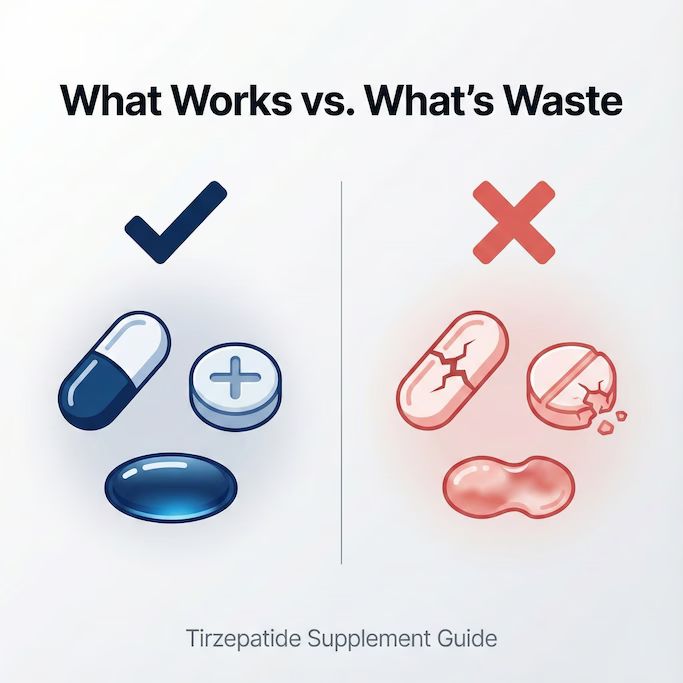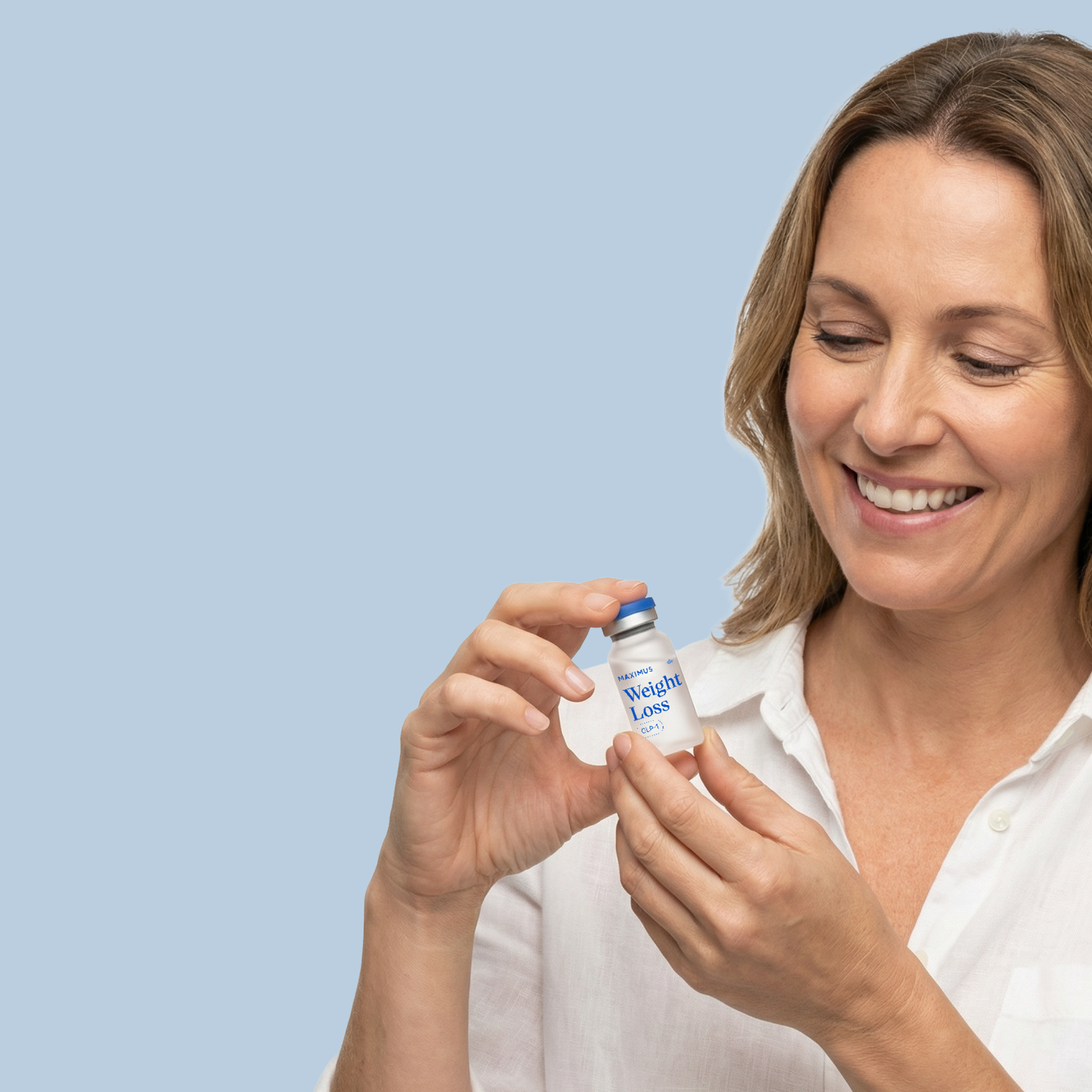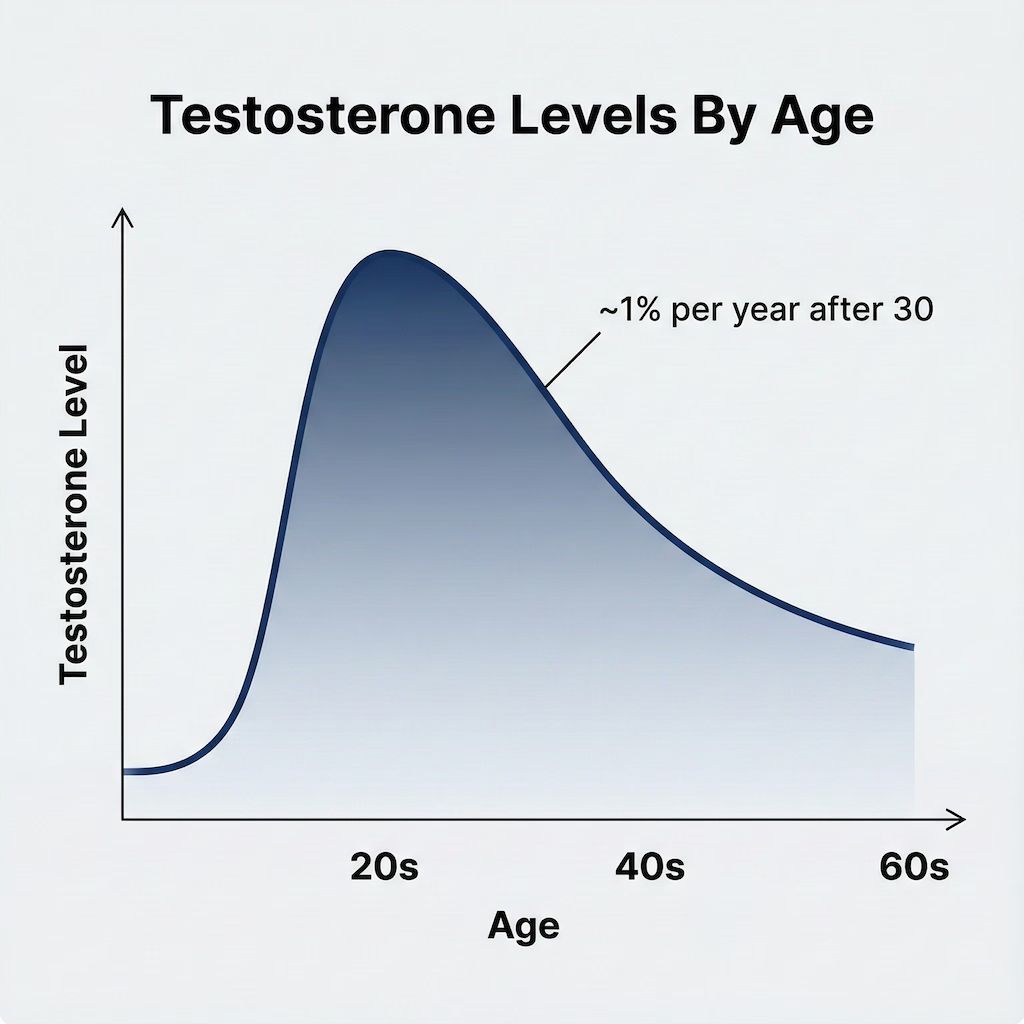Introduction
Testosterone levels peak in a man’s late teens, and by his mid-thirties, they start decreasing by about 1% each year. Toremifene is a medication that can be used to increase testosterone without the use of testosterone replacement therapy (TRT). There is also some evidence that toremifene can boost sperm count.
Read on to find out how toremifene works, how it compares to other testosterone products, and what to expect when taking the medication.
Key takeaways
- Toremifene is a selective estrogen receptor modulator (SERM), which blocks estrogen to increase testosterone without compromising sperm quality.
- Studies have found toremifene to increase testosterone by 20-60% while improving sperm count, sperm motility, and sperm morphology.
- Other benefits of toremifene include increased bone mineral density, improved lipid profiles, and a decreased cancer risk.
- Potential side effects include abnormal vision, sweating, flushing, and dry eyes.
What is toremifene?
Similar to medications like clomiphene (Clomid) and enclomiphene, toremifene citrate belongs to a class of drugs known as selective estrogen receptor modulators (SERMs). It is mainly used to treat advanced breast cancer in postmenopausal women, but it is also used off-label to increase testosterone in men and has been studied for its potential to decrease the risk of prostate cancer.
Like other SERMs, toremifene binds to hypothalamic estrogen receptors in the brain, which tricks the body into thinking that it’s not getting enough estrogen. As a result, the body amps up the production of the hormones luteinizing hormone (LH) and follicle stimulating hormone (FSH) to stimulate the testes to make more testosterone and sperm.
How toremifene affects testosterone levels
Numerous studies have found that toremifene significantly increases testosterone levels without compromising sperm quality.
In this study comparing three SERMs–tamoxifen, toremifene, and raloxifene–in men with low sperm count, taking 60 mg toremifene for three months resulted in a 54% increase in total testosterone. There were also significant increases in LH and FSH levels noted.
Another three-month study on men with low sperm count found that toremifene administration resulted in a significant increase in FSH, testosterone, SHBG, and inhibin B levels. Total T levels rose around 40-50% due to a “direct beneficial effect” on the testes.
And in one study of men with a high risk of prostate cancer, daily administration of toremifene increased total T by 20-60% and free T by 20% along with increased LH and FSH levels without any notable adverse effects.
Does toremifene affect sperm count?
Along with boosting T levels, toremifene has also been shown to improve sperm count and quality. In the study cited above on men with low sperm count, toremifene caused significant improvements in sperm count, sperm motility, and sperm morphology over the course of three months. This was bolstered by increased gonadotropin secretion and the medication’s direct impact on the testes. As a result, 22 men's partners achieved pregnancy within two months of the end of treatment.
Other benefits of taking toremifene
Some other reported benefits of taking toremifene include:
- Increased bone mineral density: Some research has shown that toremifene significantly increases bone mineral density. In a study of men receiving androgen deprivation therapy (ADT) for prostate cancer, the medication increased bone density at the lumbar spine, hip, and femoral neck vs placebo.
- Improved lipid profiles: In another study of men receiving ADT for prostate cancer, taking toremifene decreased their total cholesterol, LDL (bad) cholesterol, and triglycerides, and increased HDL (good) cholesterol over a year of treatment.
- Decreased cancer risk: In a study of healthy elderly subjects, toremifene decreased insulin-like growth factor (IGF-I) by 20%, which was considered “favorable” from a perspective of cancer treatment. Researchers also noted its potential to protect tissues such as the brain, bone, and muscle.
Toremifene vs TRT
While TRT is typically considered the first-line treatment for low testosterone, it is associated with a number of adverse effects, including infertility. SERMs like toremifene and enclomiphene are ideal for men who want to improve their testosterone without compromising their fertility. As proven above, SERMs have the added benefit of even improving sperm count and quality. And studies examining TRT alternatives have found SERMs to be just as effective at increasing testosterone in as little as four weeks.
Even more, TRT shuts down the body’s ability to make testosterone by replacing it synthetically, typically leading to dependency. SERMs like toremifene prompt the body to make more of its own testosterone, restoring instead of replacing.
Other common side effects of TRT include testicular shrinkage, acne, cardiovascular issues, worsened sleep apnea, and non-cancerous growth of the prostate. However, it is possible to transition from TRT to SERMs for low testosterone, as long as you do so gradually.
Toremifene vs Other SERMs
Toremifene is structurally similar to the SERM tamoxifen, and differs only by a single chlorine atom. These two medications have been shown to be superior in increasing gonadotropin levels when compared to another SERM raloxifene. However, some animal studies have found that chronic, high-dose tamoxifen is hepatocarcinogenic, whereas toremifene is not. Whether this finding has any relevance to humans is not fully determined.
Tamoxifen also had no significant benefit for men struggling with infertility in a 2021 study comparing various SERMs. However, toremifene and enclomiphene improved fertility in three months of treatment. Clomiphene was also found to be effective at improving fertility, but after six to nine months of treatment.
Potential toremifene side effects
Some potential side effect of taking toremifene include:
- Abnormal vision (including temporary blindness)
- Sweating
- Facial flushing
- Dry eyes
- Swelling
Other ways to increase testosterone
Taking a medication like toremifene is just one potential option for increasing testosterone. Making simple lifestyle changes can also help support normal testosterone levels. This includes:
- Exercising regularly and maintaining a healthy weight
- Following a nutritious diet
- Reducing your use of alcohol
- Quitting smoking
- Getting adequate sleep
- Reducing your stress levels
- Avoiding plastics and opting for BPA and PFA free products
If you’ve been thinking of starting TRT or taking medication to boost your testosterone levels, find out how the Maximus Enclomiphene Protocol can help. Consisting of the SERM enclomiphene citrate, the King Protocol is clinically proven to boost testosterone by 1.5-2.5X without the adverse side effects associated with dated alternatives.
Learn more about how to boost testosterone, whether you’re experiencing low testosterone symptoms like fatigue or low libido, or you simply want to experience the advantage of making more testosterone safely.
Disclaimer: The contents of this article, including, but not limited to, text, graphics, images, and other information, is for information purposes only and does not constitute medical advice. The information contained herein is not a substitute for and should never be relied upon for professional medical advice. The content is not meant to be complete or exhaustive or to be applicable to any specific individual's medical condition. You should consult a licensed healthcare professional before starting any health protocol and seek the advice of your physician or other medical professional if you have questions or concerns about a medical condition. Always talk to your doctor about the risks and benefits of any treatment. Never disregard or delay seeking professional medical advice or treatment because of something you have read on this site. Maximus does not recommend, endorse, or make any representation about the efficacy, appropriateness, or suitability of any specific test, products, procedures, treatments, services, opinions, healthcare providers or other information contained herein. Maximus is not responsible for, nor will they bear any liability for, the content provided herein or any actions or outcomes resulting from or related to its use.





